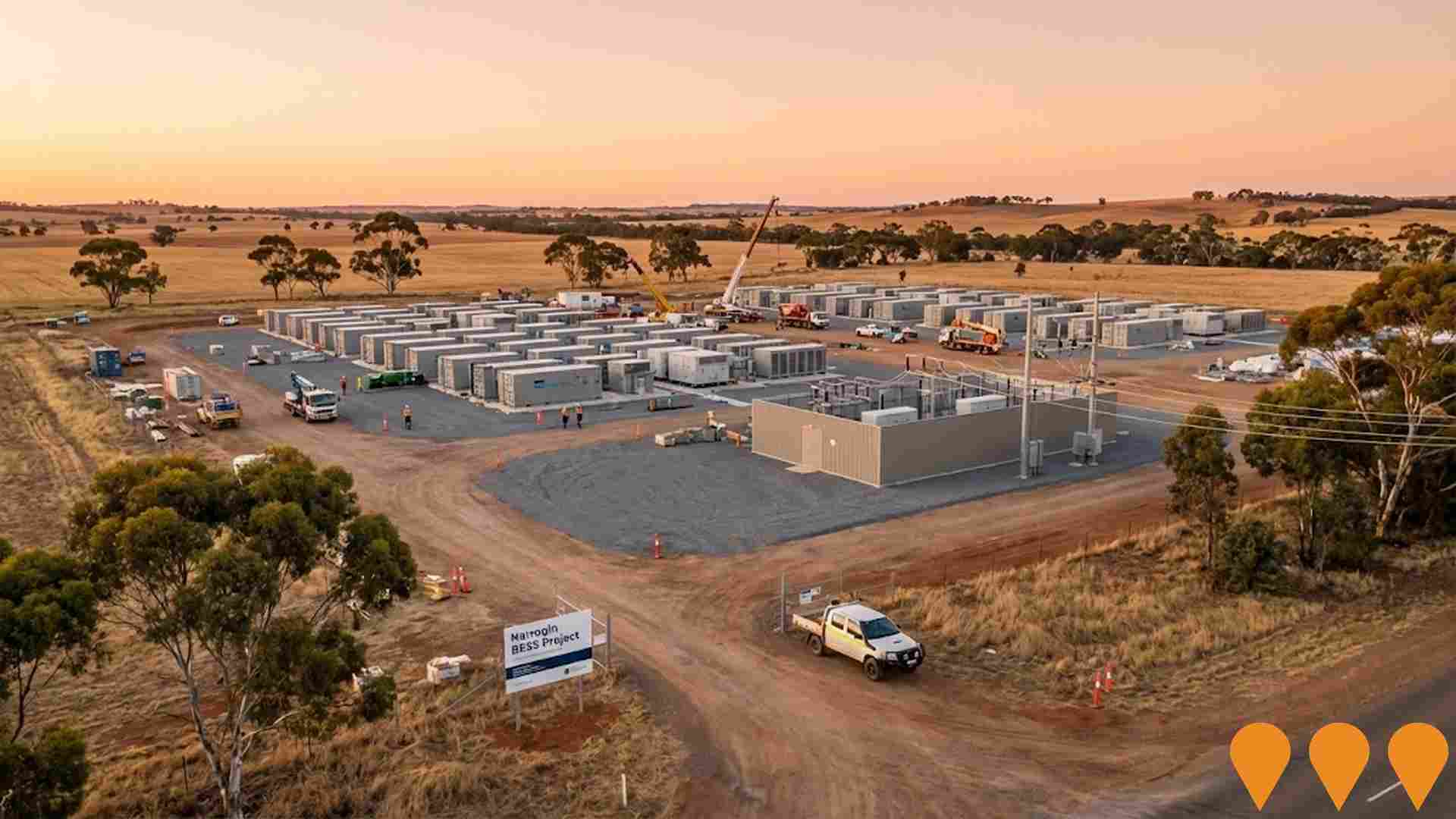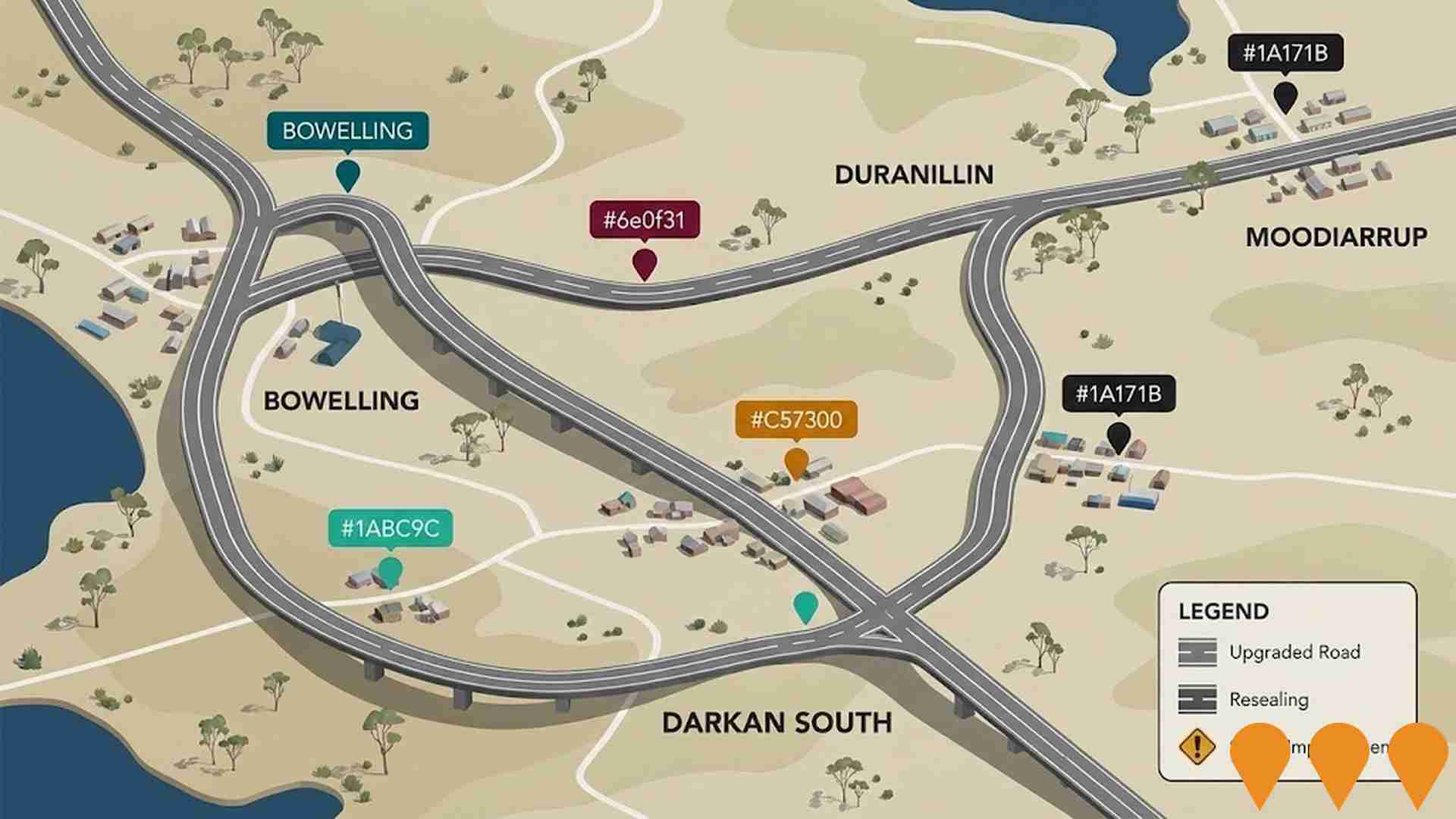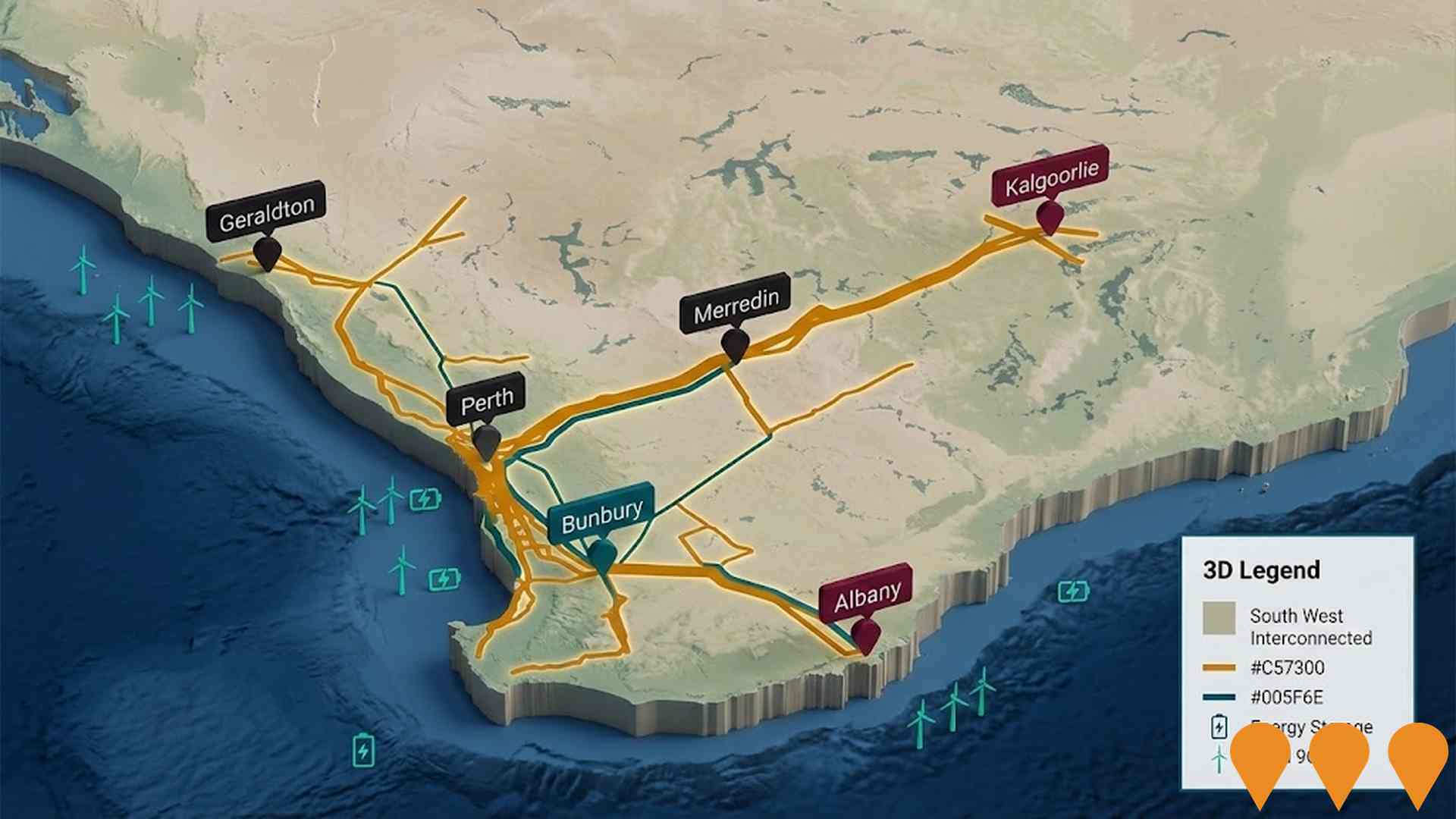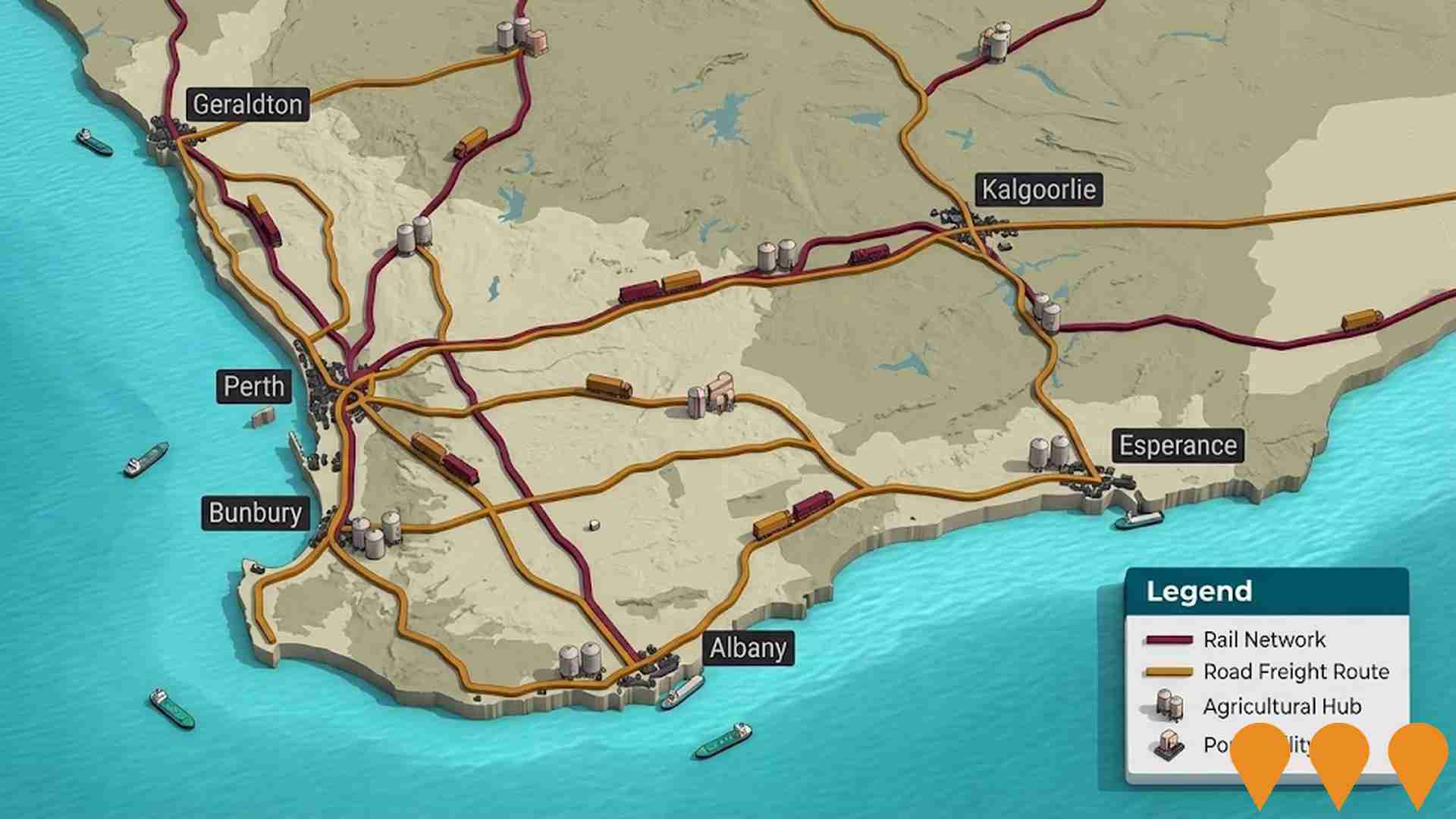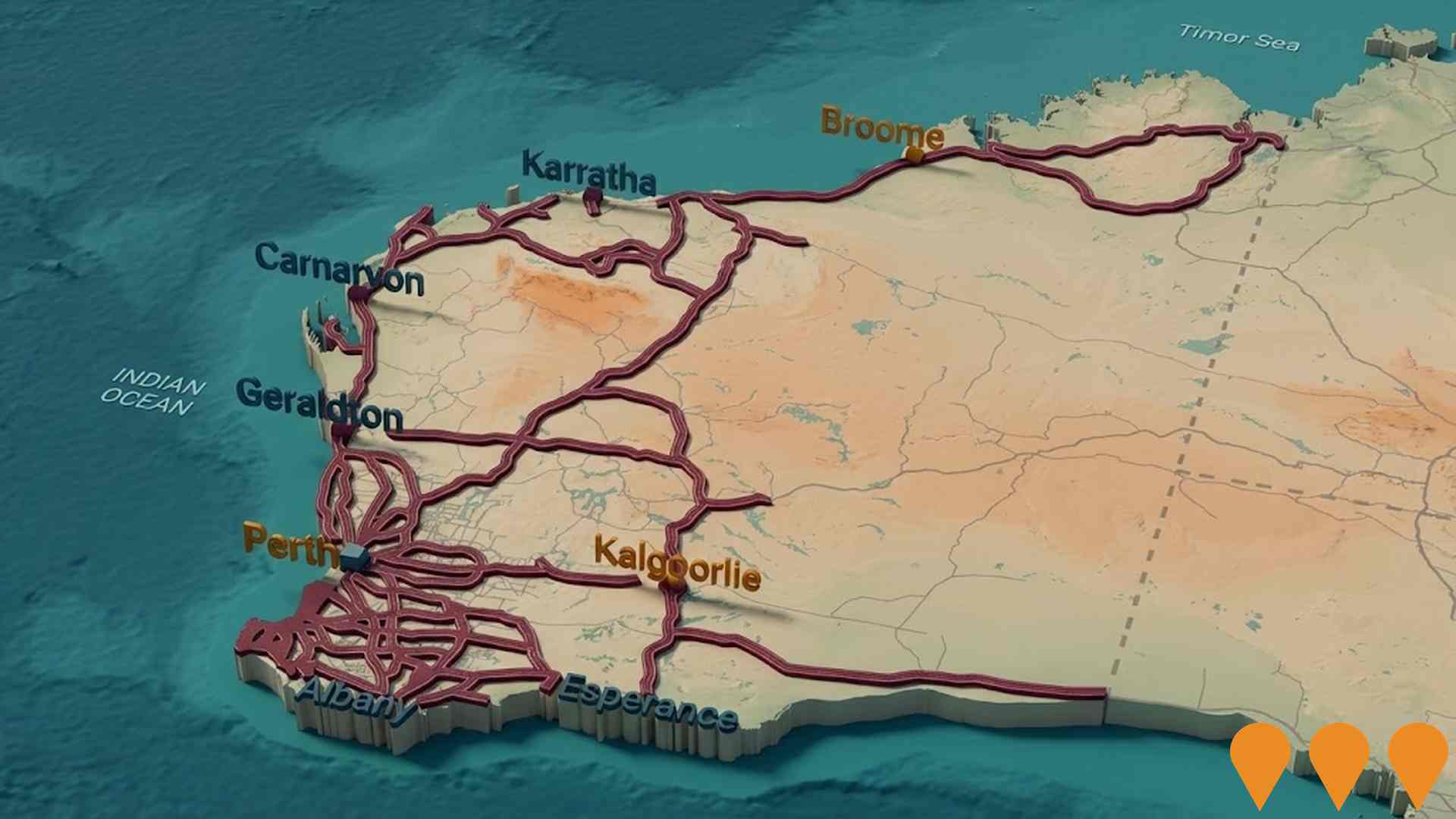Chart Color Schemes
est. as @ -- *
ABS ERP | -- people | --
2021 Census | -- people
Sales Activity
Curious about local property values? Filter the chart to assess the volume and appreciation (including resales) trends and regional comparisons, or scroll to the map below view this information at an individual property level.
Find a Recent Sale
Sales Detail
Population
Narrogin is positioned among the lower quartile of areas assessed nationally for population growth based on AreaSearch's assessment of recent, and medium term trends
Narrogin's population, as of November 2025, is approximately 4,609. This figure represents an increase of 239 people since the 2021 Census, which recorded a population of 4,370. The growth was inferred from the estimated resident population of 4,603 in June 2024 and three additional validated addresses since the census date. This results in a population density ratio of 9.0 persons per square kilometer. Narrogin's 5.5% population increase since the census is within 0.9 percentage points of its SA3 area's growth rate of 6.4%. Overseas migration was the primary driver of recent population gains.
AreaSearch uses ABS/Geoscience Australia projections for each SA2 area, released in 2024 with a base year of 2022. For areas not covered by this data and post-2032 growth estimates, AreaSearch employs growth rates by age cohort from the ABS's latest Greater Capital Region projections (released in 2023, based on 2022 data). Future population trends project an above-median growth for non-metropolitan areas. By 2041, Narrogin is expected to grow by 697 persons, representing a total increase of 15.0% over the 17-year period.
Frequently Asked Questions - Population
Development
AreaSearch assessment of residential development drivers sees a low level of activity in Narrogin, placing the area among the bottom 25% of areas assessed nationally
Narrogin has approximately 6 residential properties granted approval annually. Over the past five financial years, from FY21 to FY25, a total of 31 homes were approved, with an additional one approved so far in FY26. On average, about 0.3 people have moved to the area for each dwelling built over these five years.
This indicates that new supply is meeting or exceeding demand, providing ample buyer choice and allowing for population growth beyond current forecasts. The average construction cost of new homes is $278,000. In FY26, Narrogin has recorded $4.8 million in commercial development approvals, reflecting its primarily residential nature. Compared to the Rest of WA, Narrogin has significantly less development activity, 51.0% below the regional average per person. This constrained new construction typically reinforces demand and pricing for existing properties.
However, development activity has increased recently. Nationally, Narrogin's development activity is also below average, suggesting possible planning constraints. New development consists of 80.0% detached dwellings and 20.0% medium to high-density housing, preserving the area's low density nature and attracting space-seeking buyers. The estimated population per dwelling approval is 613 people. Future projections indicate Narrogin adding 691 residents by 2041. At current development rates, housing supply may struggle to match population growth, potentially increasing buyer competition and supporting price increases.
Frequently Asked Questions - Development
Infrastructure
Narrogin has emerging levels of nearby infrastructure activity, ranking in the 34thth percentile nationally
Area performance is significantly influenced by local infrastructure changes, major projects, and planning initiatives. AreaSearch has identified six projects likely to impact the area, with key ones being Narrogin Health Service Redevelopment, Narrogin Biodiesel Plant, Narrogin Solar Farm & BESS, and Narrogin BESS Project. The following list details those most relevant.
Professional plan users can use the search below to filter and access additional projects.
INFRASTRUCTURE SEARCH
 Denotes AI-based impression for illustrative purposes only, not to be taken as definitive under any circumstances. Please follow links and conduct other investigations from the project's source for actual imagery. Developers and project owners wishing us to use original imagery please Contact Us and we will do so.
Denotes AI-based impression for illustrative purposes only, not to be taken as definitive under any circumstances. Please follow links and conduct other investigations from the project's source for actual imagery. Developers and project owners wishing us to use original imagery please Contact Us and we will do so.
Frequently Asked Questions - Infrastructure
Narrogin Health Service Redevelopment
A $50 million major redevelopment of the Narrogin Health Service, officially opened in October 2019, as part of the Southern Inland Health Initiative. The project included a new outpatient building, two new birthing rooms with ensuites, a new inpatient ward, theatre, procedure room and sterilising department, and new dental and chemotherapy services. The new outpatient building features a striking chequerboard facade representing stacked hay bales.
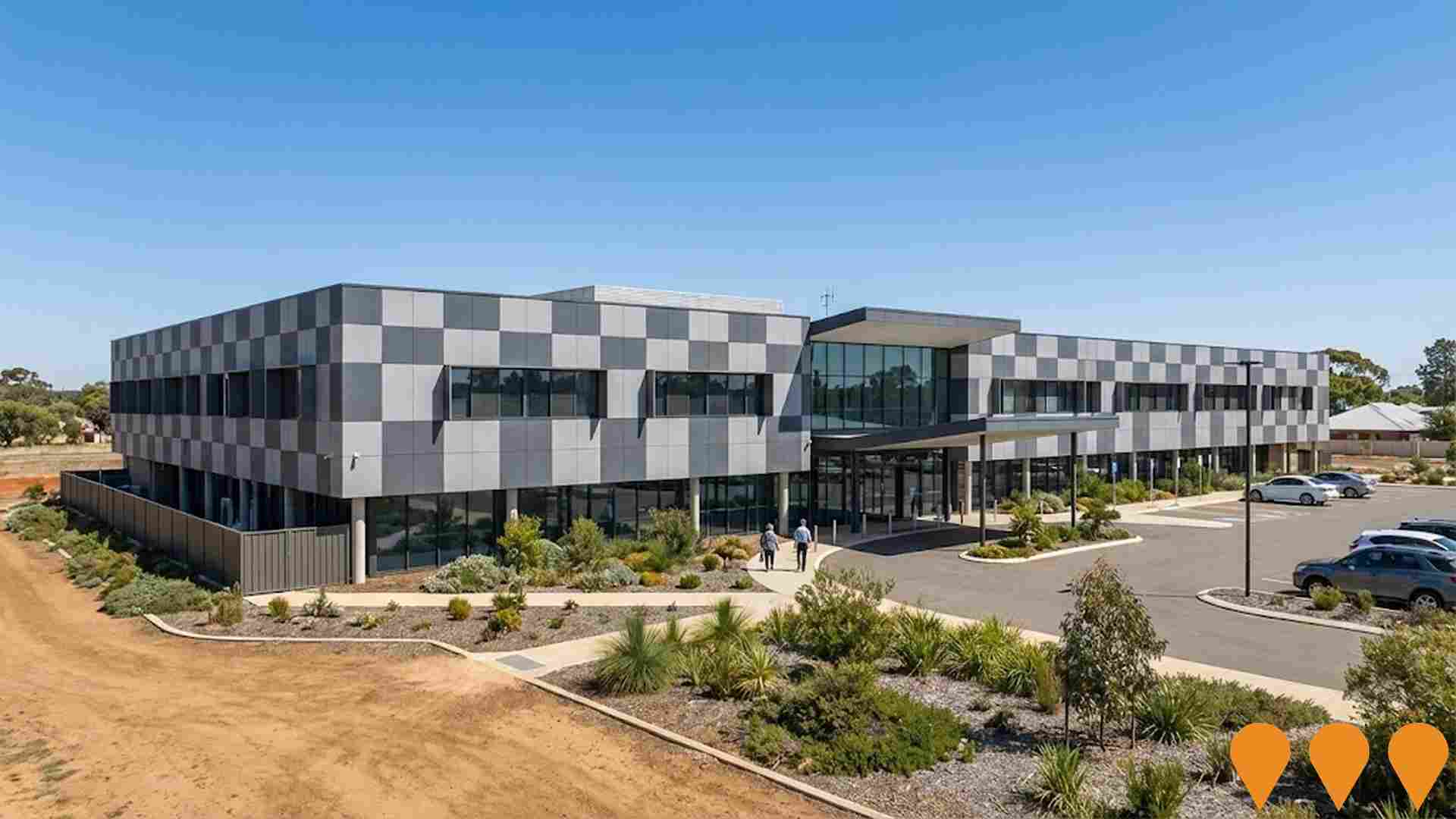
Dardadine Wind Farm
A proposed wind farm with a capacity of up to 1209.6MW and up to 168 wind turbines. It is expected to generate enough capacity to supply around 700,000 homes. The proposal also includes a containerised battery energy storage system. The project is currently undergoing technical studies and design, with community consultation planned for late 2024.

Bellwether Wind Farm
A flagship renewable energy project for the Wheatbelt region of Western Australia. The proposed wind farm would consist of up to 400 turbines with 6.2MW capacity each over a project area of 100,000 hectares with dozens of landowners, with a potential generation capacity of approximately 3 GW. The project is strategically located along the proposed Clean Energy Link - East transmission line. It would provide drought-resistant incomes to farmers and support local towns with new business opportunities, as well as the chance to retrain or re-skill into the renewable energy sector, while providing power to existing businesses seeking to decarbonize their operations. Construction is proposed to start in 2028 with completion targeted for 2030.
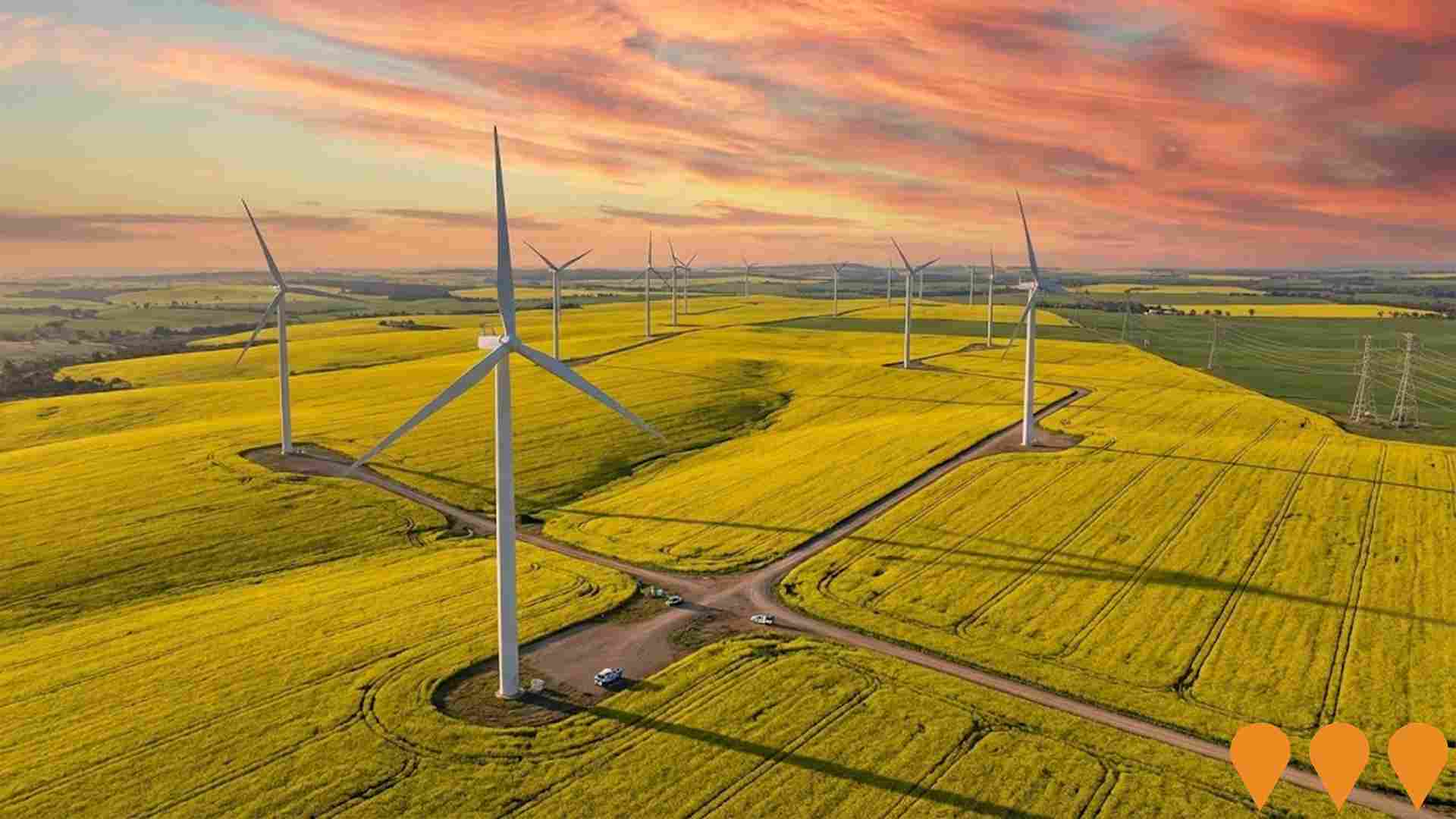
Narrogin Biodiesel Plant
A biorefinery plant to produce approximately 19 million litres of renewable diesel per year from waste biomass, including supporting infrastructure. The renewable diesel is a 'drop-in' replacement for conventional diesel. By-products include biochar and wood vinegar for the agricultural industry. The operational life is expected to be 30 years.
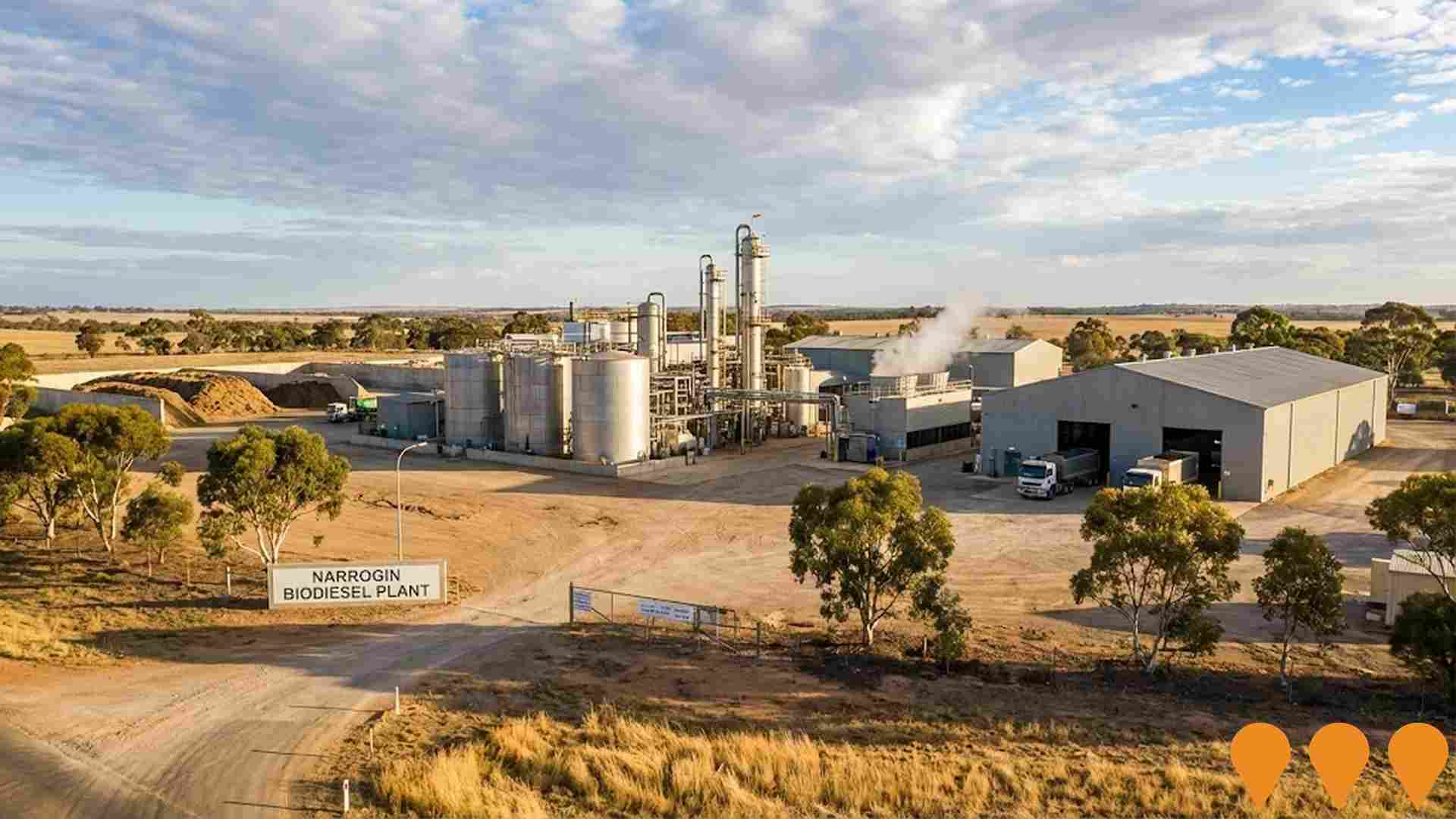
Narrogin East Wind, Solar & BESS Project
A proposed hybrid renewable energy project by Lightsource bp, comprising approximately 250 MW wind, 150 MW solar, and a 200 MW battery energy storage system (BESS). The project is one of several large-scale renewable energy developments in the Narrogin region, aiming to contribute to Western Australia's energy transition. Construction is expected to provide approximately 450 jobs and begin around Q1 2028.

Narrogin Wind Farm
A 200 MW wind farm comprising up to 23 wind turbines (reduced from an initial proposal of 25) and a 100 MW/200 MWh Battery Energy Storage System (BESS). The project has received both state and federal environmental and development approvals, with construction expected to start in February 2026 and last for approximately 33 months. The wind farm will connect to the South West Interconnected System (SWIS).
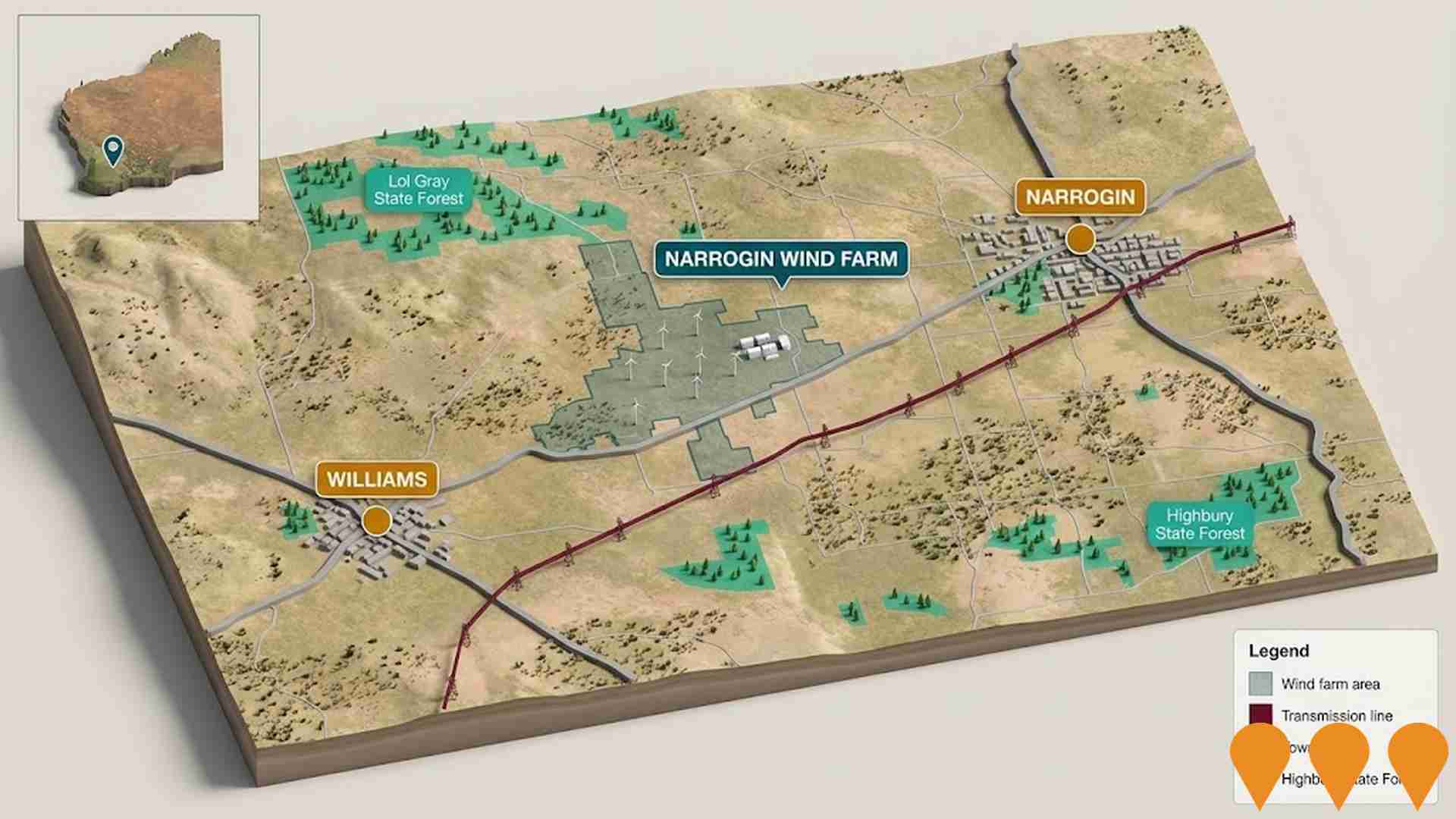
North Williams Wind Farm
A proposed wind farm located approximately 10-20 km north of Williams, Western Australia, which is currently in the feasibility phase. The project, being developed by Lacour Energy, is expected to comprise 80-120 wind turbines, with a potential first stage of 40-60 turbines. The project is targeted to supply electricity to the Western Power network by 2030, with construction planned to commence in 2027 or 2028.

Narrogin Solar Farm & BESS
A 200 MW DC solar farm with a co-located 200 MW / 800 MWh battery energy storage system (BESS) proposed on private land south of Narrogin, Western Australia. The project received development approval from the Regional Development Assessment Panel in June 2025 and is part of a cluster of major renewable energy projects in the region. The site will maintain agricultural use with sheep grazing amongst the solar panels (agrivoltaics). Construction is estimated to take around 18 months, commencing from February 2026, creating an estimated 230 jobs at peak construction.

Employment
AreaSearch analysis reveals Narrogin significantly outperforming the majority of regions assessed nationwide
Narrogin's workforce is skilled with well-represented essential services sectors. The unemployment rate was 1.8% as of June 2025.
This rate is 1.4% lower than the Rest of WA's rate of 3.2%. Employment growth over the past year was estimated at 1.2%. In June 2025, 2,452 residents were employed. Workforce participation in Narrogin was 56.0%, below the Rest of WA's 59.4%.
Dominant employment sectors among residents include health care & social assistance, education & training, and retail trade. The area shows strong specialization in health care & social assistance, with an employment share of 1.5 times the regional level. Mining employs just 1.8% of local workers, below Rest of WA's 11.7%. Many residents commute elsewhere for work based on Census working population to local population count. Over a 12-month period ending June 2025, employment increased by 1.2%, while labour force decreased by 1.6%, causing the unemployment rate to fall by 2.7 percentage points. In contrast, Rest of WA saw employment rise by 1.1%, labour force grow by 0.5%, and unemployment fall by 0.6 percentage points. Jobs and Skills Australia's national employment forecasts from May 2025 suggest potential future demand within Narrogin. These projections estimate national employment growth at 6.6% over five years and 13.7% over ten years, with varying rates between industry sectors. Applying these projections to Narrogin's employment mix suggests local growth of approximately 6.0% over five years and 12.9% over ten years.
Frequently Asked Questions - Employment
Income
Income levels sit below national averages according to AreaSearch assessment
AreaSearch's latest postcode level ATO data for financial year ending June 30, 2022 shows that median income in Narrogin is $49,719 and average income stands at $60,584. This contrasts with Rest of WA's figures where median income is $57,323 and average income is $71,163. Based on Wage Price Index growth of 14.2% since financial year ending June 30, 2022, current estimates for Narrogin would be approximately $56,779 (median) and $69,187 (average) as of September 2025. From the Census conducted on August 10, 2021, household, family and personal incomes in Narrogin rank modestly, between the 20th and 34th percentiles. The earnings profile shows that 27.8% of locals (1,281 people) fall into the $1,500 - 2,999 income category. Housing costs are modest with 87.7% of income retained, resulting in total disposable income ranking at just the 25th percentile nationally.
Frequently Asked Questions - Income
Housing
Narrogin is characterized by a predominantly suburban housing profile, with a higher proportion of rental properties than the broader region
Narrogin's housing stock, as per the latest Census, was 91.3% houses and 8.7% other dwellings (semi-detached, apartments, 'other' dwellings), compared to Non-Metro WA's 95.1% houses and 4.9% other dwellings. Home ownership in Narrogin stood at 37.7%, with mortgaged dwellings at 30.0% and rented ones at 32.4%. The median monthly mortgage repayment was $1,170, higher than Non-Metro WA's average of $1,105. Median weekly rent in Narrogin was $240, compared to Non-Metro WA's $200. Nationally, Narrogin's mortgage repayments were significantly lower than the Australian average of $1,863, and rents were substantially below the national figure of $375.
Frequently Asked Questions - Housing
Household Composition
Narrogin features high concentrations of lone person households, with a lower-than-average median household size
Family households constitute 61.0% of all households, including 21.4% couples with children, 27.1% couples without children, and 11.6% single parent families. Non-family households account for the remaining 39.0%, with lone person households at 36.1% and group households comprising 2.6% of the total. The median household size is 2.2 people, smaller than the Rest of WA average of 2.3.
Frequently Asked Questions - Households
Local Schools & Education
Narrogin faces educational challenges, with performance metrics placing it in the bottom quartile of areas assessed nationally
The area has lower university qualification rates (17.1%) compared to the Australian average of 30.4%. Bachelor degrees are the most common at 13.5%, followed by graduate diplomas (2.0%) and postgraduate qualifications (1.6%). Vocational credentials are prevalent, with 39.1% of residents aged 15+ holding them - advanced diplomas at 9.9% and certificates at 29.2%. Educational participation is high, with 30.9% of residents currently enrolled in formal education: secondary (11.7%), primary (11.0%), and tertiary (2.3%).
Narrogin's five schools have a combined enrollment of 1,240 students. The area serves as an educational hub with 26.9 school places per 100 residents, above the regional average of 14.4, attracting students from surrounding communities.
Frequently Asked Questions - Education
Schools Detail
Nearby Services & Amenities
Transport
Transport servicing is low compared to other areas nationally based on assessment of service frequency, route connectivity and accessibility
Narrogin has two active public transport stops operating, both serving a mix of bus routes. These stops are served by three individual routes in total, offering eleven weekly passenger trips combined. The accessibility of these transport services is limited, with residents typically living 1019 meters away from the nearest stop.
On average, each route provides one trip per day, resulting in approximately five weekly trips per stop.
Frequently Asked Questions - Transport
Transport Stops Detail
Health
Health performance in Narrogin is well below average with prevalence of common health conditions notable across both younger and older age cohorts
Narrogin faces significant health challenges, with common conditions prevalent among both younger and older age groups. Private health cover stands at approximately 50% (around 2,304 people), lower than the rest of Western Australia's 52.7%. Nationally, this figure is 55.3%.
Arthritis and mental health issues are the most common conditions, affecting 9.4 and 9.1% respectively. About 65.1% report no medical ailments, slightly lower than the rest of WA's 65.6%. The proportion of residents aged 65 and over is 19.9%, lower than WA's 21.7%.
Frequently Asked Questions - Health
Cultural Diversity
In terms of cultural diversity, Narrogin records figures broadly comparable to the national average, as found in AreaSearch's assessment of a number of language and cultural background related metrics
Narrogin's cultural diversity aligns with its wider region, with 82.8% citizens, 80.9% born in Australia, and 89.3% speaking English only at home. Christianity is the predominant religion in Narrogin at 53.5%, compared to 49.0% across Rest of WA. The top three ancestry groups are English (31.9%), Australian (29.8%), and Scottish (6.8%).
Notably, South African (1.4%) and Dutch (1.8%) groups are overrepresented in Narrogin compared to regional averages of 0.6% and 1.3%, respectively. New Zealanders also slightly exceed the regional average at 1.0%.
Frequently Asked Questions - Diversity
Age
Narrogin hosts an older demographic, ranking in the top quartile nationwide
The median age in Narrogin was 42 years as of 2021, which is slightly higher than Rest of WA's average of 40 years and considerably older than Australia's average of 38 years. Compared to Rest of WA, Narrogin had a higher proportion of residents aged 15-24 (14.9%) but fewer residents aged 35-44 (11.2%). After the 2021 Census, the median age decreased by 1.1 years from 43 to 42, indicating a shift towards a younger demographic. Key changes showed that the proportion of residents aged 25-34 increased from 11.5% to 13.9%, while the proportion of those aged 15-24 rose from 12.8% to 14.9%. Conversely, the proportion of residents aged 55-64 decreased from 13.4% to 12.1%, and the proportion of those aged 45-54 dropped from 12.2% to 11.1%. Demographic modeling suggests that Narrogin's age profile will evolve significantly by 2041, with the 25-34 age cohort projected to increase markedly by 378 people (59%), from 642 to 1,021. Meanwhile, population declines are projected for the 15-24 and 85+ cohorts.
